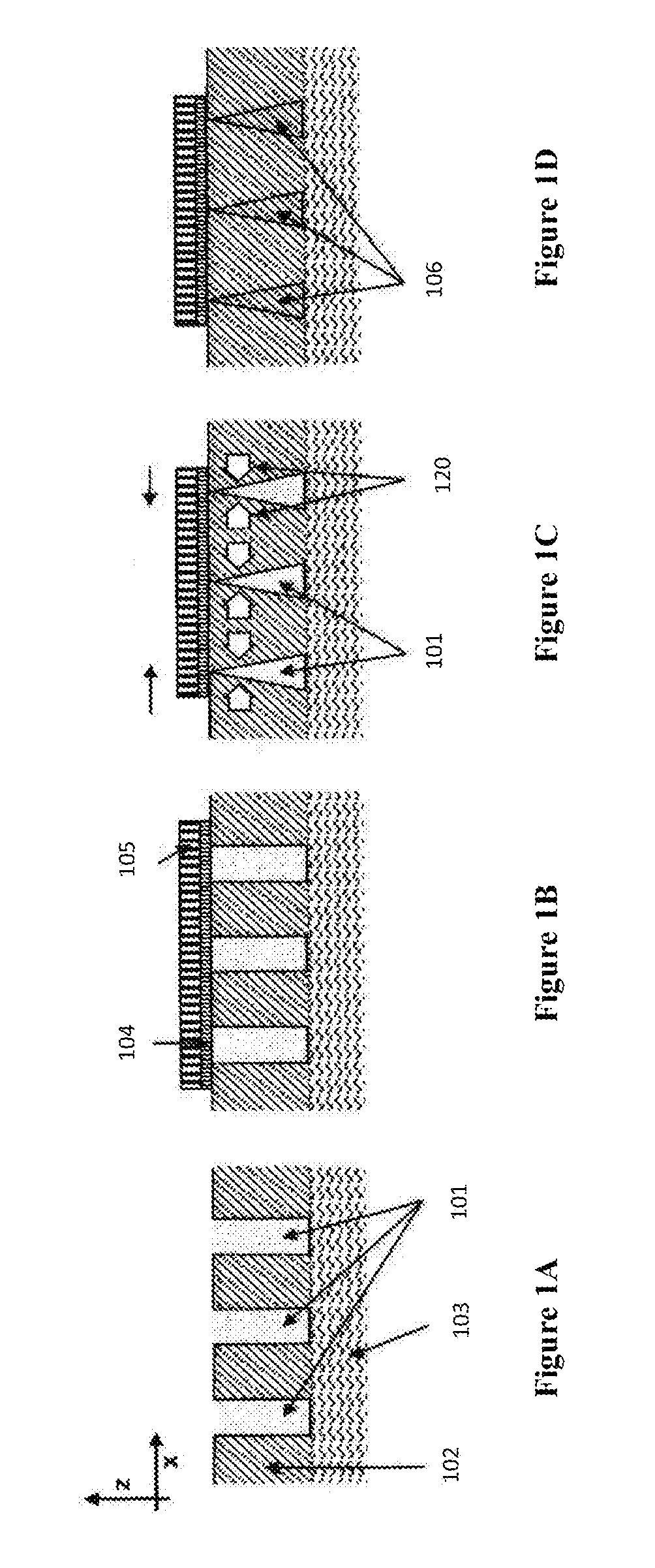Methods and devices for skin tightening
a skin tightening and skin technology, applied in the field of skin tightening methods and devices, can solve the problems of scarring, limiting applicability, invasiveness, inconvenient, inconvenient, etc., and achieve the effect of reducing skin laxity
- Summary
- Abstract
- Description
- Claims
- Application Information
AI Technical Summary
Benefits of technology
Problems solved by technology
Method used
Image
Examples
example 1
Treating Skin Regions
[0145]A skin region can be treated by any useful method prior to affixing a dressing. For example, this method can include forming a plurality of small holes is in the skin through the dermal and epidermal layer. Generally, the dimension of the holes is in the range of 50-500 pm in diameter. Without wishing to be limited by theory, it is envisioned that up to 40% of the treated skin surface can be removed and that the amount of removed skin determines the extent of the tightening effect. The holes can be formed surgically, for example, by using a hollow coring needle (e.g., any described herein). Alternative forms of energy, e.g., such as laser, non-coherent light, radio-frequency, or ultrasound, can also be used to form the holes. The holes can be circular or have any other preferred shape (e.g., an elongated shape). After the formation of such holes, the methods and devices (e.g., dressings) described herein (e.g., in the following Examples) can be employed to...
example 2
Tunable Dressing Affixed to the Skin in a Tensionless State and then Activated to Compress the Skin (Method 1)
[0146]After treating the skin to form a plurality of holes in a skin portion, a tunable dressing can be used to compress the skin. In one embodiment, the dressing comprises an adhesive layer that is in contact with the skin and a tension-regulation layer (a regulatable layer) that is affixed to the adhesive layer. The tension-regulation layer allows adjustment of the dimension of the dressing in the plane of the dressing (e.g., parallel to the skin in the x-direction in FIG. 1 or in the y-direction (not shown in FIGS. 1A-1D)). Other functional layers include those providing occlusion to control humidity and / or to promote moisture-enhanced wound healing, absorption of wound exudate, delivery of drugs, etc., which can be added to the dressing.
[0147]In particular embodiments, the dressing is applied on a treated skin area in a tensionless state. At that stage, the dressing does...
example 3
Tunable Dressing Including a Shape-Memory Alloy (Method 1)
[0151]The dressing can include any useful material in the regulatable layer. In one embodiment, the tension-regulation layer can integrate a shape-memory alloy (SMA) material in any useful form, e.g., in the form of wires. The SMA can be geometrically arranged, and its mechanical properties can be optimized to respond to particular changes in temperature. In one non-limiting embodiment, a network of SMA wires is arranged in the regulatable layer, e.g., tension-regulation layer 105, e.g., a grid of SMA wires 201, as shown in FIG. 2.
[0152]Similar to the dressing in the above-described example, elevation of temperature can irreversibly alter the wound-dressing geometry, and the SMA can be programmed with another low temperature threshold below room temperature that reverts dimensional changes observed after exposure to temperature above the high temperature threshold. In this manner, a user can expand the dressing, for example, ...
PUM
 Login to View More
Login to View More Abstract
Description
Claims
Application Information
 Login to View More
Login to View More - R&D
- Intellectual Property
- Life Sciences
- Materials
- Tech Scout
- Unparalleled Data Quality
- Higher Quality Content
- 60% Fewer Hallucinations
Browse by: Latest US Patents, China's latest patents, Technical Efficacy Thesaurus, Application Domain, Technology Topic, Popular Technical Reports.
© 2025 PatSnap. All rights reserved.Legal|Privacy policy|Modern Slavery Act Transparency Statement|Sitemap|About US| Contact US: help@patsnap.com



